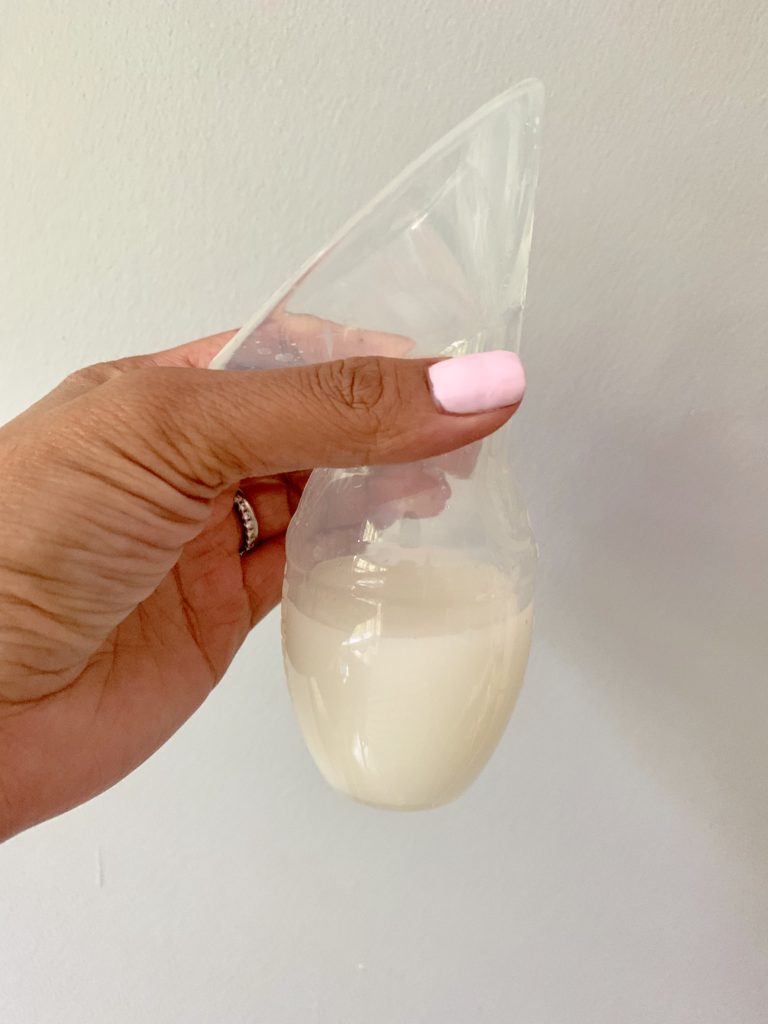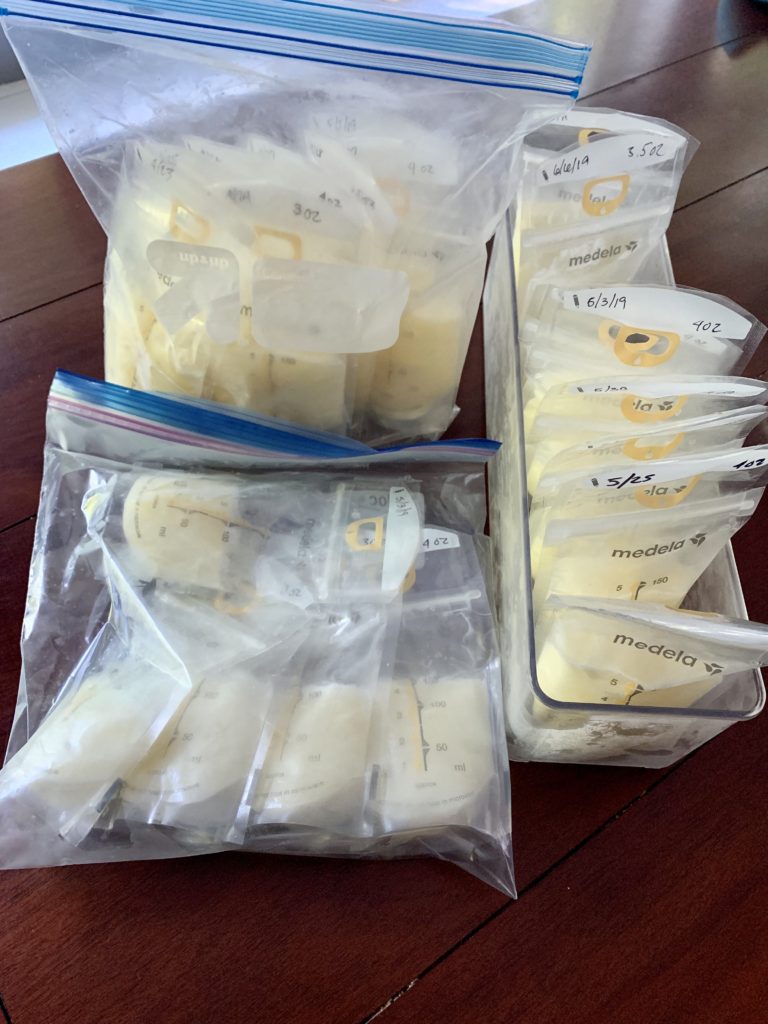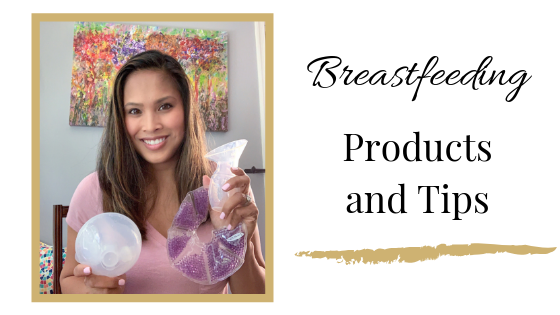Breastfeeding can be the most beautiful thing, and the hardest thing for a mom. It is a 24/7 commitment, which requires persistence, dedication and endurance. There is a steep learning curve, and for some, it brings frustration and pain in the initial stage. As a third time breastfeeding mama and postpartum care specialist, I wanted to bring you 3 breastfeeding products and tips to make the journey a little easier for you. By the way, this is not a sponsored post, just products I love! There are, however, some affiliate links in this post.
What to Use
Lansinoh Therapearls 3-in-1 breast therapy
I will be 100% honest with you. The initial stages of breastfeeding are uncomfortable…scratch that, painful. If you are the unicorn mama who didn’t have a painful start, kudos to you!! Now I say INITIAL, because it should not hurt after the first two weeks. If the pain prolongs, you probably should seek out a lactation consultant.
What is painful about it? Your nipples get abused, especially if you aren’t establishing a good latch. Engorgement and clogged ducts make your tatas rock hard and feel like they’re about to explode. This invention is great. You can keep it in the freezer and apply it as a coldpack or heat it up in the microwave to use as a heat pack.
FYI: HEAT= stimulate blood flow in the tissue, open the ducts to create the flow of milk. Best for before and during nursing/pumping. COLD= reduce inflammation and provide pain relief. Good for after nursing or in between feedings.
PROS: 1) Super easy to use, 2) comes with a soft sleeve if you prefer to protect your skin from direct contact 3) fits perfectly inside your bra and around the shape of your breast
CONS: 1) If you need it cold, you need to remember to put it back in the freezer after use, 2) Avoids the nipple, which for some who have clogged duct at the nipple the warm compress directly on the nipple could be helpful
Postpartum Living is a participant in the amazon affiliates program, therefore we may benefit from any purchases made through this site, at no additional cost to the purchaser.
Haakaa Silicone Pump
Throughout all three of my breastfeeding experiences, I have always been a low-supplier. I would make just enough milk or just under what I needed for the baby, and trust me I did all the techniques, drank all the teas, ate all the cookies…I just am not an abundant cow. This made it even harder to build up a freezer supply of milk for when I was away from the baby. However, I was determined to do it, so I would nurse and pump, nurse and pump (anyone familiar with this cycle? It’s exhausting).
A few months ago, I took a breastfeeding course for clinicians while I prepping for the launch of Postpartum Living, and the lactation consultant mention Haakaa pump. This pump is designed to collect the let-down from the one breast while you are nursing baby on the other. I tried it out, and HOLY COW (pun intended), I was getting a full ounce or more during my letdown. Typically, all of that milk was being wasted into my nursing pad. I stored it in the fridge, and by the end of the day, I had collected enough for one full feeding, which I was able to freeze. Imagine that- building a freezer stash of pumped milk without even breaking out the electric pump!! Hallelujah.
-

After just ONE session -

frozen milk supply after 2 months of using haakaa alone
PROS– 1) easy to use, just suction it on and get to nursing 2) easy to clean, no separate parts or little crevices, and dishwasher safe 3) can be used as a handpump on the go to relieve
CONS– 1) Results vary depending on how strong your let-down phase is 2) Unless you get the upgraded version with the suction bottom, it can tip over easily if you aren’t careful! 3) If you don’t leave it on for the whole nursing period, you will only collect the foremilk and miss out on the fatty-rich hind-milk. So be sure not to pull it off too soon!
Freemie Independence Hands-Free Mobile Pump
Let first say this…I hate pumping. It’s cumbersome, it’s time-consuming and a real pain in the a$$. However, for most mamas, it needs to be done. This is especially those who have difficulty nursing or need to be away from their baby.
When I had my first son in 2016, I used the Medela Pump In Style, since I wanted something compatible with returning to work and it was highly recommended. One downfall of this pump was that it requires you to hold the flanges while you pump or strap on a hands-free bra in order to multitask. My friend recommended I buy Freemie collection cups that were compatible with my pump. This changed the game for me, as I was able to place these in my bra as I pumped and feel a little less restricted. However, I was still connected by tubing and couldn’t really go anywhere.
This go-around I got the Freemie pump through my insurance. Let me tell you, it is truly a game-changer.
PROS: 1) battery operated, so not adapter and wiring needed. 2) Variable suction AND speed, so that you can customize the settings perfectly to your needs. 3) Hospital-grade suction really gets that milk out. 4) covered by insurance. On their website, it’s a very seamless process to register for a pump and it literally showed up on my doorstep in less than a week.
CONS: (These are very minor but I felt like I should come up with something), 1) Cups are still not as inconspicuous as I would like. But you look like Dolly Parton instead of Madonna, so that’s not bad. 2) Battery needs to be charged…but that’s the nature of batteries right?
(Note that these are the collection cups that connect to a regular non-freemie pump)
What to Do:
- Don’t enslave yourself to the clock.In the hospital, the nurses and lactation consultants will instruct you to record when you stop and start feeding so that you can understand your baby’s feeding pattern and intake. HOWEVER, I found it very stressful to continue this at home and would get bogged down by the times and the ounces of output. With my second son, I decided not to watch the clock other than to keep a loose idea of when he last fed. This way I could feed on his demand and not be a slave to the clock with a screaming hungry baby. It was a MUCH more enjoyable breastfeeding experience the second and third time because of this.
- Drink copious amounts of water.You need fluids to make milk AND to keep yourself hydrated and heal quicker. I definitely noticed a difference in my milk output when I didn’t drink enough water, and when I did. If it’s hard to remember to drink, keep a big pitcher with a straw near where you nurse and drink when baby drinks. It’s like you’re drinking buddies. Cheers!
- Handle engorgement/clogged ducts immediately.During the first week when your milk comes in, you may overproduce and feel like your boobs are going to explode. And then when it gets hard and uncomfortable, you may want to take a backseat to nursing, but in fact, nursing more frequently is what will help engorgement. If you don’t get the milk flowing, it can cause mastitis, which will warrant a call to the Dr. Some techniques to try:
- Take a hot shower letting the water hit your boobs. Massage from the outside towards the nipples.
Use the back of a vibrating toothbrush at the site of the clogged duct
Use cold, dry cabbage leaves in your bra. Seriously!
Position baby’s nose in the direction of the clogged duct to drain it more effectively. Actually, changing nursing positions often is a good habit to prevent clogged ducts!
- Take a hot shower letting the water hit your boobs. Massage from the outside towards the nipples.
__________________________
Hope these few product recommendations and tips helped a little! Email me for a whole list of them to be sent directly to you!


